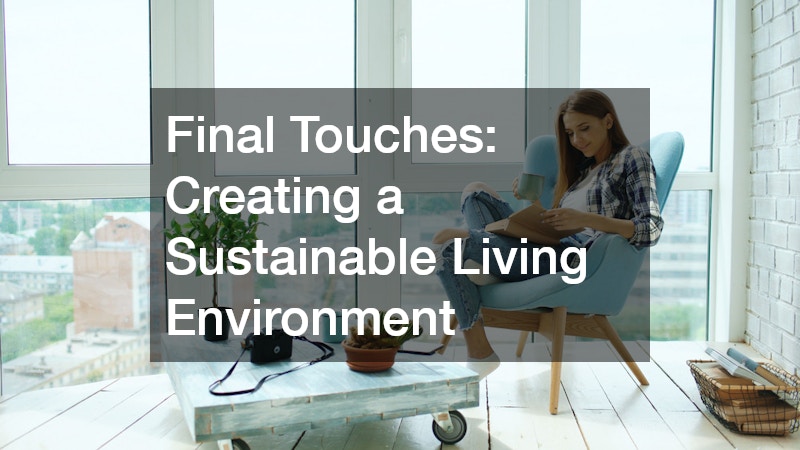Remodeling your home offers a chance to improve your living space while also reducing your environmental footprint. With increasing awareness of climate change and the growing availability of eco-friendly products, homeowners are now prioritizing sustainability when undertaking home remodeling projects. In this blog, we will walk you through the steps of sustainable home remodeling and provide tips on how to make your renovation eco-friendly, energy-efficient, and cost-effective.

I. Planning Your Sustainable Home Remodel
1. Assess Your Home’s Current Energy Efficiency
Before diving into any home remodeling projects, it’s essential to assess your home’s current energy efficiency. Identifying areas that need improvement is the first step toward a sustainable home. Energy audits are a great way to pinpoint issues, such as poor insulation, air leaks, and inefficient HVAC systems.
If you’re considering a roof installation, ensure that the new roof is well-insulated and energy-efficient. A reflective roofing material can help regulate your home’s temperature and reduce the need for heating and cooling, ultimately lowering energy consumption. The installation of a cool roof will reflect more sunlight and absorb less heat, keeping your home cooler in summer and reducing the energy required for cooling systems.
Another area that often needs attention is windows. Window installation with energy-efficient options can significantly impact your home’s energy performance. Look for windows with high-performance glazing and frames that provide insulation while letting in natural light, reducing the need for artificial lighting during the day.
2. Set a Realistic Sustainable Remodeling Budget
When planning for a sustainable remodel, it’s essential to balance eco-friendly choices with your budget. While some green materials and technologies can be more expensive upfront, they often save you money in the long term by reducing energy costs and improving your home’s efficiency.
Consider the return on investment (ROI) for each element. For instance, investing in high-quality insulation or energy-efficient appliances may have a higher upfront cost but will result in lower utility bills over time. Furthermore, the increased value of your home due to sustainable features can help you recoup some of these costs.
Also, prioritize projects that have the most significant environmental impact. If you’re remodelling your kitchen, for example, cabinetry services using sustainably sourced wood or recycled materials can make a positive environmental difference. Similarly, custom countertops made from eco-friendly materials like recycled glass or bamboo can be an excellent choice for a sustainable kitchen remodel. By focusing on durable, long-lasting materials, you’ll reduce the need for frequent replacements in the future.
3. Incorporate Green Goals into Your Design Vision
Sustainability doesn’t mean sacrificing aesthetics. You can create a stylish and functional living space while keeping your environmental goals in mind. Consider using natural materials, maximizing natural light, and designing for energy efficiency. The design should reflect your style while incorporating eco-conscious features.
For instance, home painting companies can help you select low-VOC paints and finishes that reduce harmful chemicals in your home and the environment. These paints are available in a wide range of colours, so you can still achieve the look you want without compromising your health or the planet. Additionally, consider using sustainable textiles for furniture and accessories, such as organic cotton or hemp, to further reduce your home’s ecological footprint.
II. Choosing Eco-Friendly Materials
1. Sustainable Flooring Options
When remodeling your home, selecting sustainable flooring materials is a must. Options like bamboo, cork, reclaimed wood, and linoleum are eco-friendly and durable. These materials are renewable, meaning they can be produced without causing environmental harm. Moreover, sustainable flooring can add warmth and character to your space without contributing to deforestation or environmental degradation.
If you’re heading to your local carpet store, look for carpets made from recycled fibers or natural materials like wool. These carpets are biodegradable and require fewer resources to produce than traditional synthetic options. Choose brands that prioritize sustainable manufacturing processes and materials, ensuring that the flooring has minimal impact on the environment from production to disposal.
2. Energy-Efficient Windows and Doors
Energy-efficient windows and doors are crucial for maintaining a comfortable home and reducing energy costs. Poor-quality windows can lead to significant heat loss or gain, resulting in higher energy consumption. Poorly sealed doors can also contribute to drafts and temperature fluctuations within your home.
When considering window installation, choose windows with insulated glazing, which improves the thermal performance of your home. Additionally, opt for windows that are made from sustainable materials such as vinyl, fiberglass, or aluminum. These materials are highly durable and recyclable, reducing the need for replacements over time. To further enhance the sustainability of your remodel, consider installing doors with energy-efficient seals, ensuring that your home stays well-insulated year-round.
3. Recycled and Upcycled Materials
Using recycled and upcycled materials for your remodel is an excellent way to reduce waste and conserve resources. Reclaimed wood, recycled glass, and even repurposed steel can be used to create beautiful, sustainable designs for your home. For example, upcycled wood can be used for furniture, cabinetry, or decorative elements.
By incorporating upcycled materials into your remodel, you not only give new life to old materials but also reduce the demand for new raw materials, making your project more sustainable. Look for local suppliers who offer reclaimed materials that are ethically sourced, reducing transportation emissions and supporting sustainable business practices.
4. Non-Toxic Paints and Finishes
Paints and finishes can significantly impact indoor air quality. Traditional paints often contain volatile organic compounds (VOCs) that can be harmful to your health. When remodeling, choose non-toxic paints that are low in VOCs or completely VOC-free. These products have fewer chemicals and are less likely to contribute to indoor air pollution.
Home painting companies can help you choose eco-friendly paint options that will contribute to a healthier living environment. Many of these paints offer the same durability and colour range as traditional paints, so you don’t have to compromise on quality. Additionally, consider using natural finishes like beeswax or linseed oil for wood surfaces, which are free from harmful chemicals and environmentally friendly.

III. Energy Efficiency in Remodeling
1. Insulation and Weatherproofing
Proper insulation is essential for maintaining a comfortable home while minimizing energy usage. When remodeling, make sure to upgrade your insulation, particularly in areas like attics, walls, and floors. Proper insulation reduces heat loss in the winter and prevents heat gain in the summer, leading to less reliance on heating and cooling systems.
If your home needs a roof installation, opt for materials that offer better insulation properties. High-quality roofing materials can help keep your home cooler in the summer and warmer in the winter, reducing your reliance on heating and cooling systems. Spray foam insulation, for example, is a highly effective solution for insulating hard-to-reach areas like attics, walls, and basements.
Another critical aspect is weatherproofing. Seal air leaks around doors, windows, and other openings to prevent drafts. This simple yet effective step will improve your home’s energy efficiency and reduce energy waste.
2. Smart Home Integration
Installing smart home systems is another excellent way to enhance energy efficiency. Smart thermostats, lighting systems, and appliances allow you to control energy use more effectively, ensuring that your home is only using energy when needed. These systems can also learn your habits and adjust settings accordingly, saving you even more energy over time.
You can also monitor your home’s energy consumption through smart meters, giving you a better understanding of where you can make improvements. Automated systems like these reduce energy waste and can help you save money on utilities. Furthermore, integrating smart lighting with motion sensors or timers ensures that lights are only on when necessary, reducing electricity consumption.
3. Upgrading HVAC Systems
An outdated HVAC system can be one of the biggest contributors to energy inefficiency in a home. If your system is more than 10 years old, it may be time for an upgrade. Opt for an energy-efficient HVAC system that uses less power to maintain the desired temperature.
Consider options like irrigation installs, which can reduce water usage by automatically adjusting irrigation schedules based on weather conditions. Similarly, an asphalt company offers eco-friendly paving materials that can help reduce the heat island effect in urban areas, contributing to overall home cooling. This small upgrade can significantly reduce energy consumption during the hot months.
IV. Water Conservation Features
1. Water-Efficient Fixtures
Incorporating water-efficient fixtures into your remodel can help conserve water and reduce your utility bills. Install low-flow toilets, faucets, and showerheads that use less water without compromising performance. These fixtures are particularly important in bathrooms and kitchens, where water usage tends to be high.
Consider water-saving appliances like dishwashers and washing machines, which are designed to use less water and energy. Additionally, consider installing a rainwater harvesting system to capture water from your roof, which can be used for irrigation or other non-potable needs.
2. Rainwater Harvesting Systems
A rainwater harvesting system can be an excellent addition to your home, especially if you live in a region that experiences regular rainfall. These systems collect rainwater from your roof and store it for later use in irrigation or non-potable applications. This reduces your reliance on municipal water supplies and helps you save on water bills.
Additionally, harvesting rainwater can reduce runoff and improve stormwater management around your home. Some systems can be easily retrofitted into your existing infrastructure, making it a cost-effective and environmentally friendly choice.
3. Landscaping for Water Conservation
Consider using tree removal services if your property has overgrown trees that cause water runoff issues. Additionally, switching to drought-tolerant plants or creating a xeriscape design can reduce your garden’s water consumption significantly. Use native plants that are adapted to your climate and require minimal water, fertilizers, and pesticides.
A well-designed landscaping plan can reduce the need for excess watering and prevent soil erosion, making your yard more sustainable while improving its overall health and aesthetics.

V. Reducing Waste During the Remodeling Process
1. Recycling and Reusing Materials
One of the best ways to reduce waste during remodeling is by reusing and recycling materials. If you’re updating your kitchen, you might be able to reuse your old cabinets, countertops, or flooring by giving them a fresh coat of paint or restoring their finish. Recycled materials can also be used for new projects.
2. Hiring a Sustainable Contractor
When choosing a contractor for your remodeling project, consider one who is committed to sustainability. Ask potential contractors about their practices for waste reduction, their use of eco-friendly materials, and whether they follow sustainable building practices. Local bathroom remodeling companies can be great resources for green practices and sustainable solutions in your area.
VI. Maximizing Long-Term Energy Savings
1. Solar Panel Installation
Installing solar panels is one of the most significant investments you can make in your home’s energy efficiency. Solar energy systems allow you to generate your own electricity and reduce your reliance on the grid. Over time, the savings on energy bills can offset the initial cost of installation.
2. Improving Home Ventilation
Proper ventilation is essential for maintaining good indoor air quality and ensuring that your home remains energy-efficient. Install ceiling fans, air exchangers, or passive cooling systems that help maintain airflow without consuming excessive energy.

VII. Final Touches: Creating a Sustainable Living Environment
1. Eco-Friendly Furniture and Decor
Sustainability isn’t just about materials—it extends to your furniture and decor. Choose furniture made from sustainably sourced wood, recycled materials, or other eco-conscious options. Consider upcycling old furniture rather than buying new pieces to reduce waste.
2. Indoor Air Quality
Incorporating houseplants into your home can help purify the air naturally. Certain plants are particularly effective at removing toxins, improving indoor air quality, and boosting your overall well-being.
3. Sustainable Decor Choices
Decorate with sustainability in mind. Use items that are crafted from renewable materials, such as organic cotton or bamboo. Choose natural textiles for cushions, throws, and curtains that are free from harmful dyes and chemicals.
Remodeling your home with sustainability in mind is not just a trend—it’s a responsible and rewarding way to enhance your living space. By considering eco-friendly materials, investing in energy-efficient technologies, and reducing waste, you can create a home that benefits both your family and the environment.
Whether you’re upgrading your roof, installing new windows, or remodeling your kitchen with sustainable cabinetry and custom countertops, every step you take toward sustainability counts. As you plan your next home remodel, consider working with contractors who specialize in sustainable practices to ensure your project is as green as possible.
Start small, think big, and make choices that will benefit your home, your family, and the planet for years to come.
